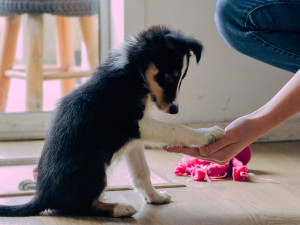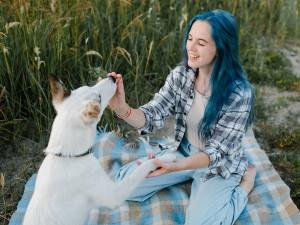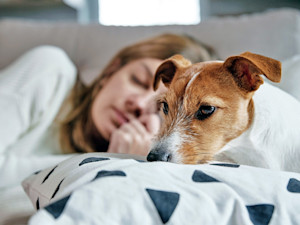Teaching Your Dog a New Cue? Make Sure They Take a Nap After
A study says sleep may help your pup better retain new skills.
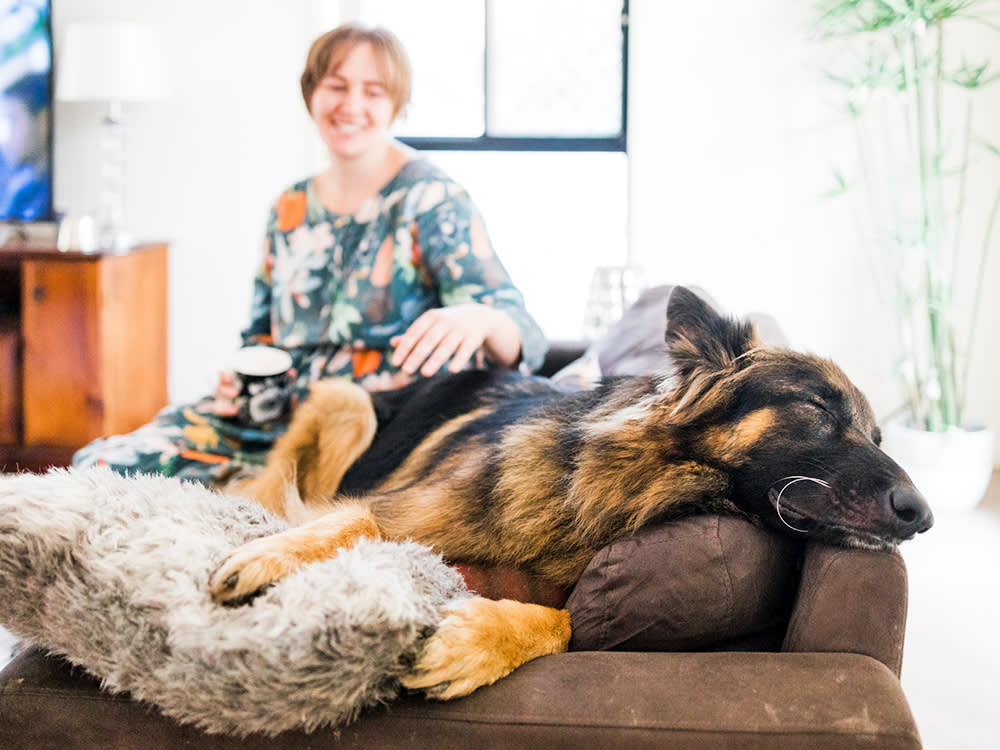
Share Article
Proper training is essential for all dogsopens in a new tab. It teaches and reinforces good behaviors, provides much-needed mental stimulationopens in a new tab, and deepens the canine-human bond. It can also be frustratingly slow-going, especially as the cues and behaviors you are trying to teach your pup get more and more complicated. And while a cue like “sit” or “lie down” may be easy to learnopens in a new tab in just a few minutes, if you want your dog to actually retain their newly acquired skill, it takes time, repetition, and, according to a 2017 study out of Hungaryopens in a new tab, a whole lot of sleep.
Anna Kis and her colleagues at the Institute of Cognitive Neuroscience and Psychology at the Hungarian Academy of Sciences in Budapest conducted a pair of experiments to investigate the link between sleep and memory in domesticated dogs.
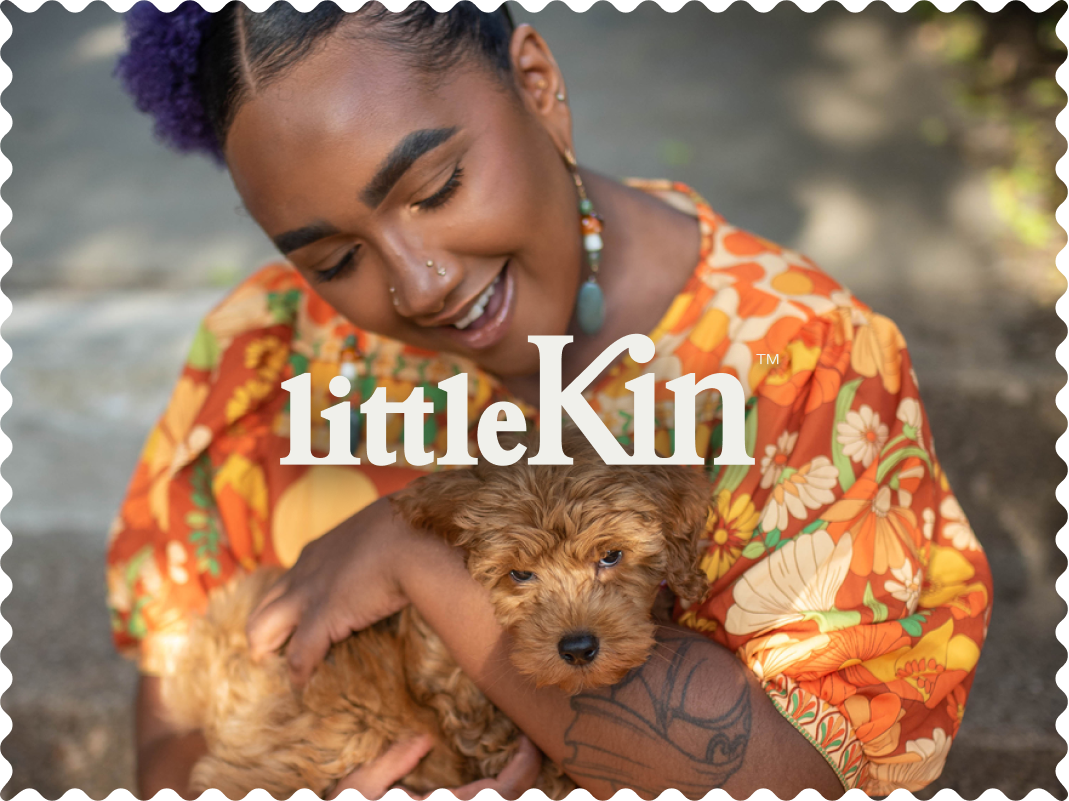
littleKin™ is Kinship’s home just for puppy and kitten parents. Bop over to check out expert advice, new pet tools, and special deals—all curated for your newest family member.
opens in a new tabIn the first experiment, dogs were taught a new cue for an existing behavior like “sit” or “lay down” and were then encouraged to take a three-hour nap. During that time, they received a non-invasive, comprehensive sleep study (polysomnography session). They were then retested on their new cue. All the dogs performed their new cues better after the nap than they did prior to their snooze. Researchers also found that there were indications that the pups may have slept more deeply after learning the new cue.
Sleep appears to have big benefits for dogs.
This outcome is not surprising, according to dog behavior expert and trainer Nicole Kohanskiopens in a new tab. “Sleep definitely helps dogs process new information,” she says. “At the Academy for Dog Trainersopens in a new tab, we call this ‘roll forward.’ Sometimes, sleeping on it works to help solidify the learning. This can be a nap or overnight. We see this every day!”
Kohanski says, in her own training work, she’s also observed that dogs sleep more deeply after training. “I feel like every dog we work with sleeps well after training sessions,” she says. “Anything we can do to exercise their brains helps predict a good sleep, including training, sniffing on walks, and noseworkopens in a new tab.”
Dog behavior expert and celebrity dog trainer Jessica Jacobsonopens in a new tab agrees. “People often forget that mental exercise is just as importantopens in a new tab for dogs as physical exercise,” she says. “Sometimes, 10 minutes of mental stimulation is even more exhausting to a dog than 20 minutes of physical exertion, so it makes sense that they would sleep better after a challenging training session.”
For the Hungarian team’s second experiment, dogs were once again taught a new cue. But this time that learning session was followed by an hour of either sleep, walking on leash, unrelated training, or play time with a Kongopens in a new tab toy. The dogs were then retested with their newly acquired cue and then tested again a week later.
Sleeping after training did not appear to have a positive impact on the dog’s ability to remember the newly acquired cue in the short-term (after one hour), but it did have a positive impact in the long-term (after one week). Kis and her team suspect the lack of improvement in the short-term may have had to do with the fact that the dogs only slept for an hour, as opposed to in the previous experiment, where they slept for three hours. Once they were able to go home and get a proper night’s sleep (seven, even) they showed marked improvement in responding to their new cues.
Dogs who went for a walk during that one-hour break also showed no signs of improvement in the short-term, but they did show advancement in the long-term, again, after seven full nights of quality sleep.
Per Jacobson, walks can be a great wayopens in a new tab of breaking up the monotony of training. “Some dogs, especially really smart dogs, like Poodles, don’t necessarily enjoy the repetitive nature of training, so you need to break it up with other activities,” she says. “Whether the best way to do that is with a walk or play or a nap depends on the preferences of the individual dog.”
While dogs who napped or walked for an hour after training showed no change in short-term recall of their new cues, dogs who played with a Kong toy or trained unrelated skills during that hour actually did worse in the same time frame. This makes sense to Jacobson. “A working toy with food is generally going to distract a dog more from training because it is more valuable to them,” she says. “It switches them from being 100 percent engaged with you to 100 percent engaged with themselves and this toy, and that can tire them out.”
Keep these tricks for success in mind.
One of the keys to effective dog training is making sure that your dog is both “not too tired and not too wired,” Jacobson says. High-value toys, like a Kong full of treatsopens in a new tab, can sometimes lead to overstimulation, followed by exhaustion. And that’s fine as long as you don’t expect your dog to perform their new cue right after they play. In fact, Jacobson often recommends pet parents use working toys like Kongs after training to help transition dogs out of a training session and into rest. She says ending too abruptly can frustrate some dogs and lead to unwanted behaviors.
Kis’s experiment found that when the dogs spent the post-training hour training additional, unrelated skills, their ability to perform the new cue worsened both in the short-term and in the long-term periods. “That makes sense,” says Jacobson. “Their brains were probably overloaded, and the cues got all mixed up.”
That’s not to say that you can’t train more than one skill at a time. But, according to both Jacobson and Kohanski, most training sessions should only be between five and 10 minutes, not an hour plus, like in Kis’s experiment.
So why, then, do most professional dog-training sessions last an hour? “Because you’re not just training the dog, you’re training the human,” says Jacobson, who insists that any training session should include breaks as needed. “When training, it’s important to read your dog’s body languageopens in a new tab and if they are turning away from you or becoming unresponsive, don’t push them to keep going.”
According to Kohanski, dogs experience four stages of learning. They are:
Acquisition: when the dog first learns the cue
Fluency: the period of time it takes to improve the speed and accuracy of the skill
Generalization: when your dog can practice the skill in varied places and situations
Maintenance: the continued training needed for your pup to maintain the cue
“Dogs can usually acquire a new cue quickly, sometimes in just a few minutes,” she says. “The generalization stage is the one that takes a bit more time.”
Remember to control their training environment.
In order to maximize your dog’s chances of retaining new cues, Kohanski and Jacobson both recommend training in calm, familiar environments where they are able to focus on what you’re doing together. During the maintenance stage, you can and should train existing skills in progressively more foreign and challenging environments, but do your best to minimize outside stimuli and distractions to start.
Kohinski also recommends using “a marker word like ‘yes’” or a clickeropens in a new tab to mark the exact moment the dog responds properly to a cue, then providing a treat-reward right after.”
The treat should be high-value to the dog (something they want and are willing to work for), but not so high-value that they become fixated on it and are unable to focus on the task at hand. “Really, you want to use the lowest-value treat possible,” Jacobson adds. “That way, you have somewhere to go, and you can save the truly high-value treats for more advanced training and emergency situations like when you are trying to curb aggressionopens in a new tab or recall your dog opens in a new tabfrom a dangerous situation.”
If all this is feeling a little overwhelming, don’t worry. The most important part of dog training is repetition and consistency. You don’t have to do everything perfectly. Just don’t overtrain them with too many skills at once, don’t train for more than five or 10 minutes at a time, and remember that if they are struggling to respond properly to a new cue, they may just need a good night’s sleepopens in a new tab.
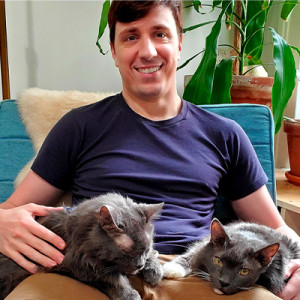
Charles Manning
Charles Manning is an actor, writer, and fashion/media consultant living in New York City with his two cats, Pumpkin and Bear. Follow him on Instagram @charlesemanningopens in a new tab.
Related articles
![Woman trains with a young husky on a dog training field]() opens in a new tab
opens in a new tabHow to Find a Qualified Trainer for Your New Dog
The questions to ask and credentials to look out for to find the right trainer for your dog, according to a pro.
![Border Collie puppy shaking owner's hand]() opens in a new tab
opens in a new tabWhen to Start Training a Puppy: a Complete Puppy Training Schedule By Age
Your puppy training schedule, from eight weeks to six months. Let’s do this.
![girl with blue hair starting puppy training with white dog]() opens in a new tab
opens in a new tabPuppy Training 101: How to Train a Puppy
You gotta start somewhere.
![Old Great Dane dog sitting in grass and looking up at the hand of his owner during a training sessions]() opens in a new tab
opens in a new tabAre You Making These Common Dog Training Mistakes?
Pro Karen London, PhD shares the most common dog training errors and how to correct them.
![Tired millennial woman sleeps on sofa with her dog.]() opens in a new tab
opens in a new tabDogs Stay Up Worrying at Night Too, Study Says
It may happen more when there stressful events like fireworks.
- opens in a new tab
Why Does My Dog Sleep on Their Back?
It is so sweet...




